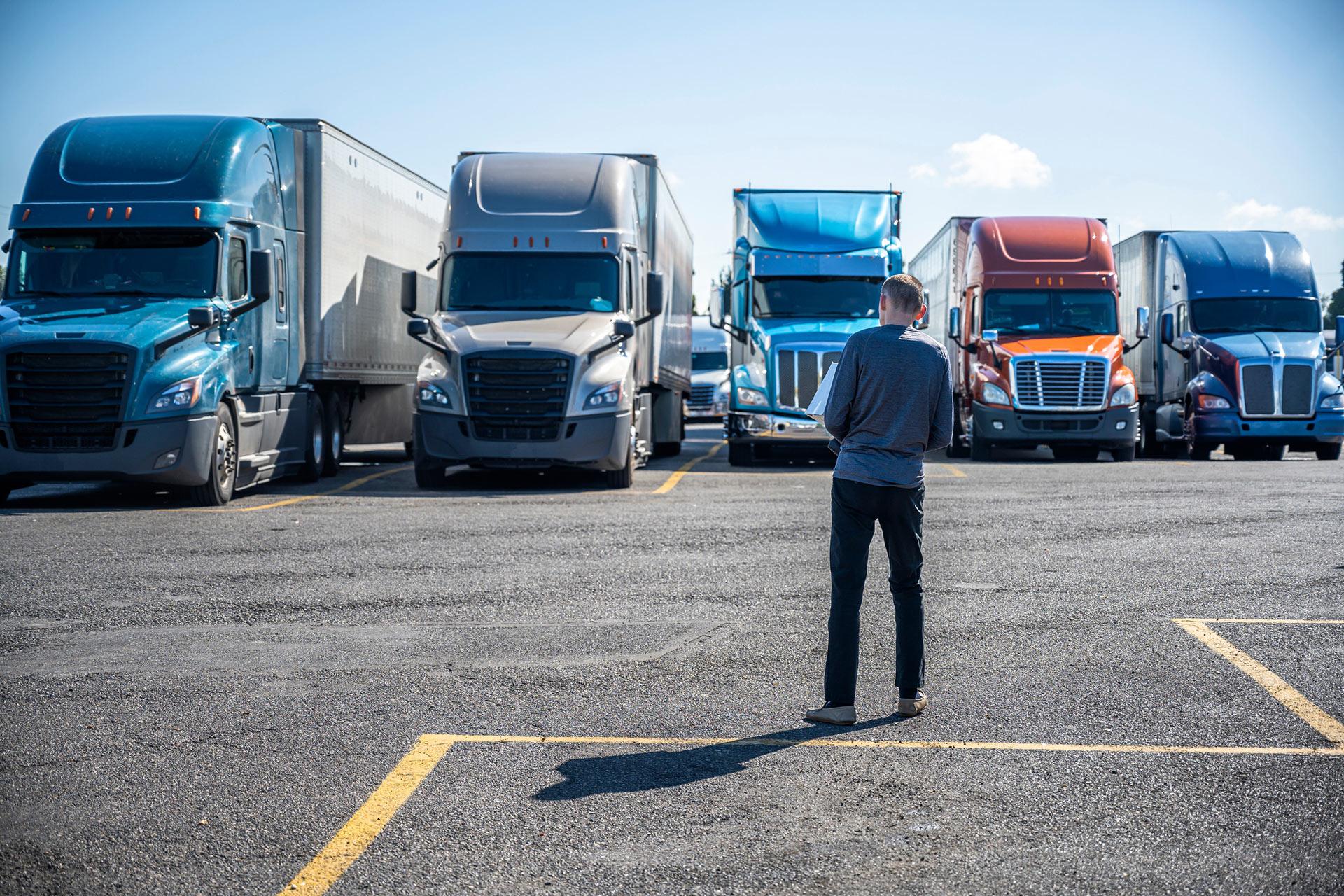Prerequisites Needed to Become an Owner-Operator
May 5th, 2025
By Arrow Truck Sales

Making the move from company driver to owner-operator is a big step—and a serious one. It’s not just about buying a truck and hitting the road under your own name; it’s about building a business that works at every level. That takes planning, paperwork, money, and the ability to handle every part of the job—not just driving.
So, what exactly do you need to get started? Here’s a brief look at what it really takes to become an owner-operator.
What Is an Owner-Operator?
An owner-operator is a truck driver who owns—or finances—their own rig and runs freight as an independent business. Unlike company drivers, who haul loads for someone else's operation, owner-operators make their own decisions about freight, equipment, lanes, and contracts.
It's more freedom. It's also more responsibility. You're the driver, the dispatcher, the accountant, and the compliance officer.
That independence makes the job appealing, but it also means you need to show up prepared for all of it.
Start with the Basics
You can’t build a business without a solid foundation. Before anything else, you need:
A valid CDL
– For most semi-truck drivers, this means a Class A Commercial Driver’s License, which allows you to operate vehicles with a gross combination weight rating (GCWR) over 26,001 pounds.
A clean driving record
– Accidents, violations, and out-of-service citations can derail your insurance options or make brokers hesitant to work with you.
At least 1–2 years of driving experience
– Most insurance companies and shippers expect some road time before they’ll back a first-time owner-operator.
Registering as a Business
Owner-operators are business owners. That means choosing a legal structure.
Sole Proprietorship
– Easy to set up, minimal paperwork, but you’re personally liable for the business.
LLC (Limited Liability Company)
– Adds a layer of protection between your personal assets and business debts. Also allows you to open business bank accounts and build credit in the business name.
Once you’ve decided how to structure your business, get an EIN (Employer Identification Number) from the IRS. Even if you don’t hire employees, it’s useful for tax reporting and banking.
Getting Your Operating Authority
If you’re hauling interstate freight under your own name, you’ll need:
USDOT Number
– Required for all interstate carriers.
MC Number (Motor Carrier Authority)
– Grants you permission to operate as a for-hire carrier.
These registrations go through the Federal Motor Carrier Safety Administration (FMCSA). You’ll also need to file for a BOC-3 (process agent designation), which appoints someone in each state to receive legal documents on your behalf.
Insurance Requirements
Before your authority becomes active, you’ll need proof of insurance. At minimum:
$750,000 liability coverage
(most brokers and shippers expect $1 million)
Cargo insurance
– Usually required at
$100,000
Physical damage coverage
– Especially if your truck is financed
Occupational accident or workers’ comp
– Required in many states
Insurance is a major startup cost, so get quotes early and build those numbers into your financial plan.
Understand Compliance
Running your own truck means staying compliant with a list of state and federal rules. Here’s what you’ll need:
IRP Registration
– International Registration Plan gives you apportioned license plates to run in multiple states.
IFTA Permit
– International Fuel Tax Agreement lets you report and pay fuel taxes across state lines.
ELD (Electronic Logging Device)
– Required to track your hours of service (HOS).
Drug and Alcohol Testing Program
– You’ll need to enroll in a consortium and complete a pre-employment test.
UCR (Unified Carrier Registration)
– Annual registration for interstate carriers.
If that sounds like a lot, it is. But once it's in place, managing it becomes routine, as long as you stay organized.
Financial Readiness
Starting as an owner-operator isn’t cheap. Between the down payment, insurance premiums, registration, and operating costs, you could easily spend $15,000–$30,000 before your first load. That’s why analyzing the costs of becoming a semi-truck driver matters.
Build out a budget that includes:
Truck payment (if financing)
Fuel
Insurance
Maintenance
Permits and registration
Emergency fund
It helps to have at least 3–6 months of operating expenses set aside. That way, one breakdown doesn’t knock you out of business.
Create a Business Plan
You don’t need a 30-page document, but you do need a plan. Think through:
What kind of freight you will haul
Which lanes make sense for your schedule and lifestyle
Whether you’ll lease onto a carrier or run under your own authority
Who you’ll work with—brokers, dispatchers, or direct shippers
The better you understand how your business will operate, the fewer surprises you’ll run into on the road.
Get Help
New owner-operators don’t have to navigate the setup process alone. There are compliance services that handle everything from DOT and MC number registration to IFTA setup and drug testing enrollment. Many drivers also work with accountants or transportation consultants to get help with taxes, business formation, and recordkeeping. State DOT offices and FMCSA resources offer guidance for new entrants, and industry associations provide ongoing support, insurance options, and education tailored to small trucking businesses. These tools can simplify the paperwork and help you stay compliant from day one.
Arrow's first-time trucker business guide is a great place to start.

Finding the Right Truck
Your truck isn’t just equipment—it’s the backbone of your business. You need something reliable, comfortable, and spec’d for the kind of freight you plan to haul. That’s where Arrow Truck Sales can help.
Arrow offers:
A wide selection of quality used semi-trucks
Financing options for first-time owner-operators
Extended warranties and protection plans to reduce repair risks
A team that understands the industry, not just the sales lot
Whether you need a fuel-efficient sleeper for long hauls or a rugged day cab for regional work, Arrow helps you find a truck that fits your business, not the other way around.
Be Sure You Are Ready Before You Start
Becoming an owner-operator isn't for everyone. It takes more than driving skill—business sense, discipline, and a willingness to wear many hats.But if you're ready to build something on your terms, it's one of the most rewarding moves you can make in this industry. Start with the right foundation. Ask questions. Do the paperwork. Get the truck that supports the work you plan to do.
When you're ready to roll, ensure you have the support that keeps you moving, not just the day you buy your truck but every mile after. Arrow's here for that.

